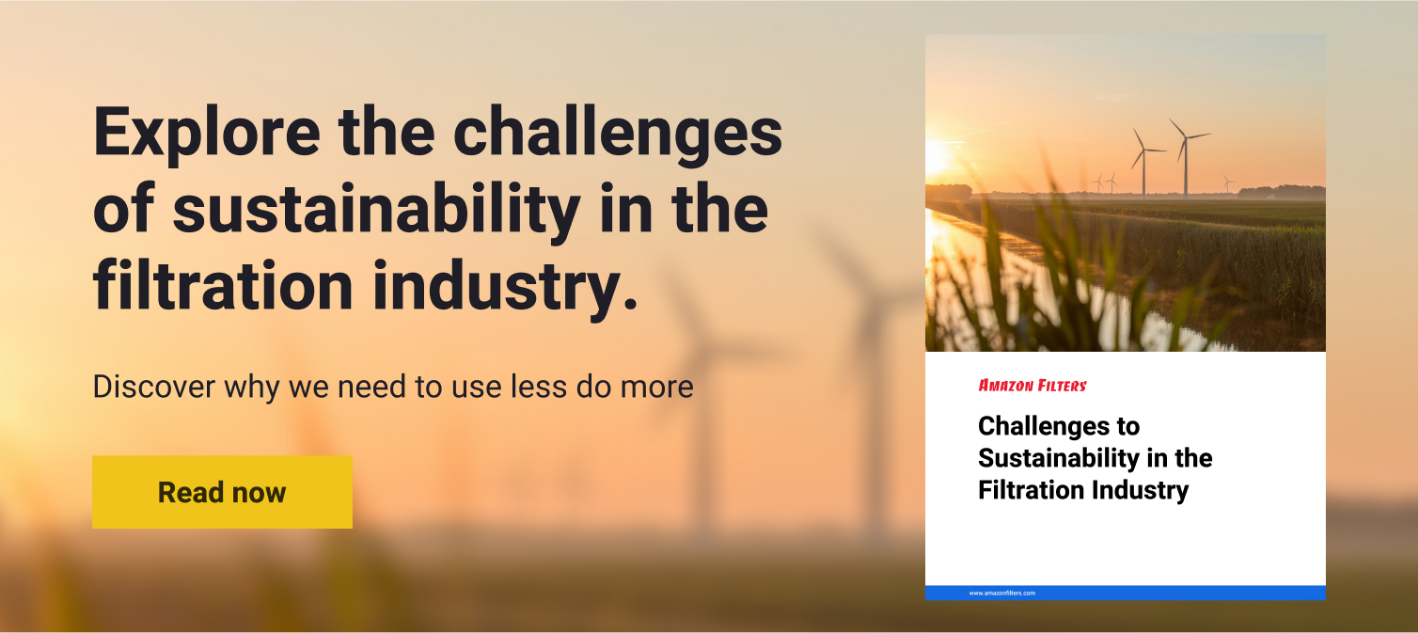The longer a filter lasts on your production line, the better. This significantly reduces operating costs, downtime, and waste. With better quality filters, you can expect to pay more upfront but spend less in the long run. In some cases, change-out frequency drops from weekly to monthly, significantly improving process efficiency.
The fewer filters you use, the less waste you produce. Here are some ways to reduce waste in your filtration process.
1. Choose the right filter
As contaminants and filtration specifications vary, use filter technology tailored to the job. If you don’t consider the whole process, including upstream and downstream equipment, then operating capacity can fall dramatically.
Do lab and site testing and select an appropriate filtration train for your business. This will make a huge difference in yields, process economics, and viability. Consider cartridges with antimicrobial and anti-algal treatments to slow biofilm buildup in processes such as sulphate removal process (SRP) membrane filtration and hospital equipment pre-filtration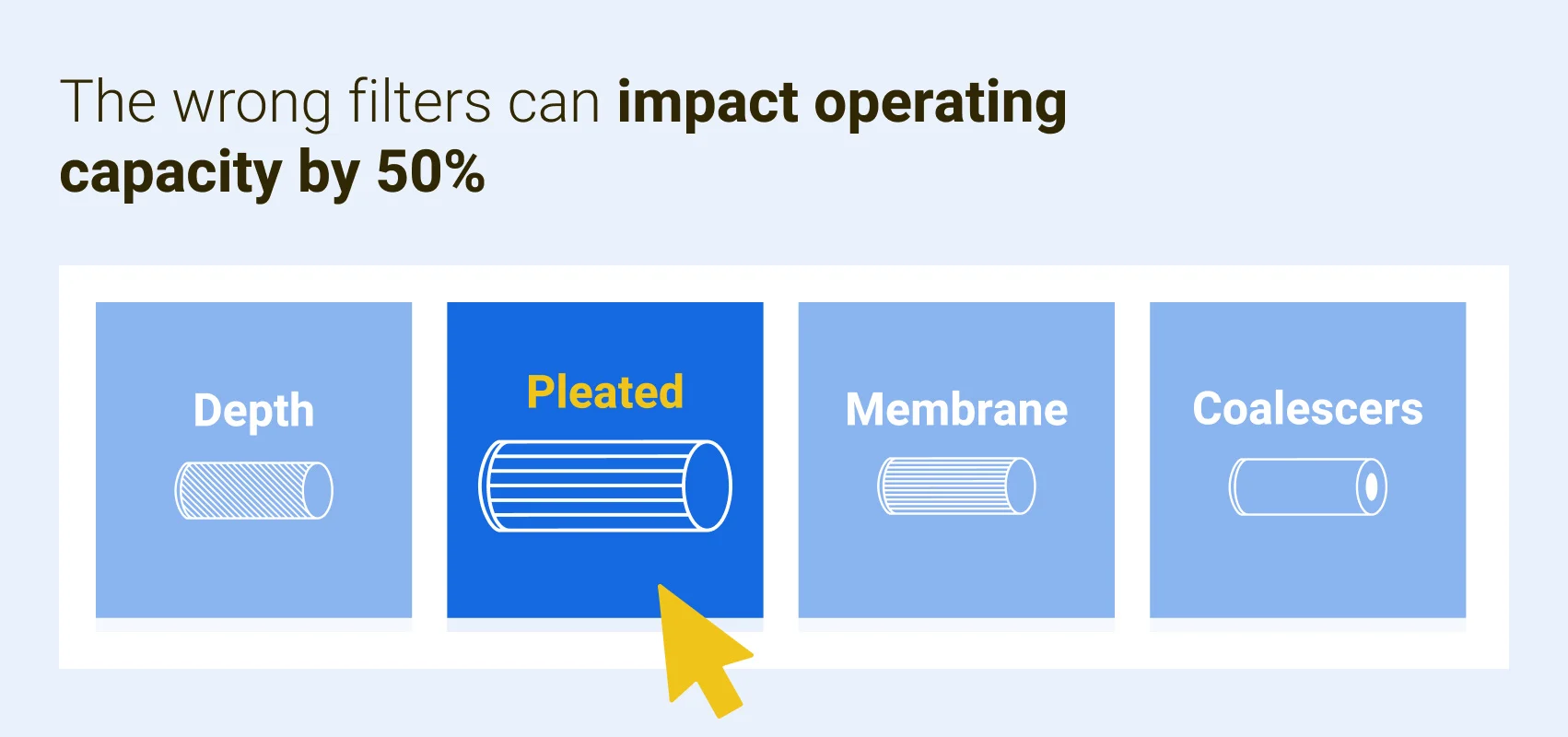
Pre-filtration
Another crucial part of the filtration process, pre-filtration removes larger particles so final filters don’t degrade and block as fast. Just like final filters, pre-filters need sizing correctly so they work effectively. When pre-filters and filters work together, production will continue for longer before you need to replace them.
2. Consider housing design
Good housing design helps smooth the change-out process, streamline operational costs, and increase production.
For example, if your housings have inadequately designed internal supports, you could end up with high differential pressures or impinged flow. This can cause cartridges to unseat.
Similarly, if you have inefficient access closures, cartridge change-outs may require more personnel, equipment, and time. These kinds of issues negatively impact production and operating expenses (OPEX). Explore options for standard and bespoke housings with your supplier before deciding.
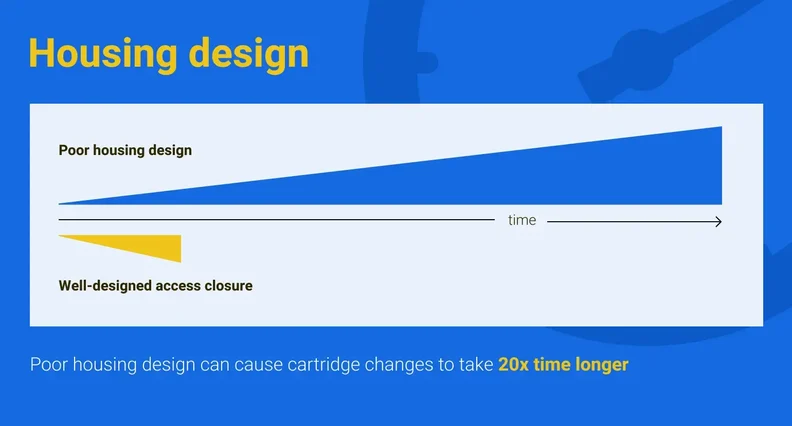
3. Accurate sizing
Correctly sized filters remove unwanted particles and reduce fouling and pressure drops. This:
- Increases efficiency and production rates
- Minimises downtime
- Reduces waste
A common production mistake is using smaller, cheaper, and poorly designed cartridges. This causes frequent blockages which stalls production and requires frequent replacements. Investing in larger, correctly sized filters, ensures more efficient production despite higher initial cost.
If you don’t have enough cartridges for your process flow rate, your system won’t last as long as it could. You’ll use more cartridges and slow production rates, reducing overall efficiency.
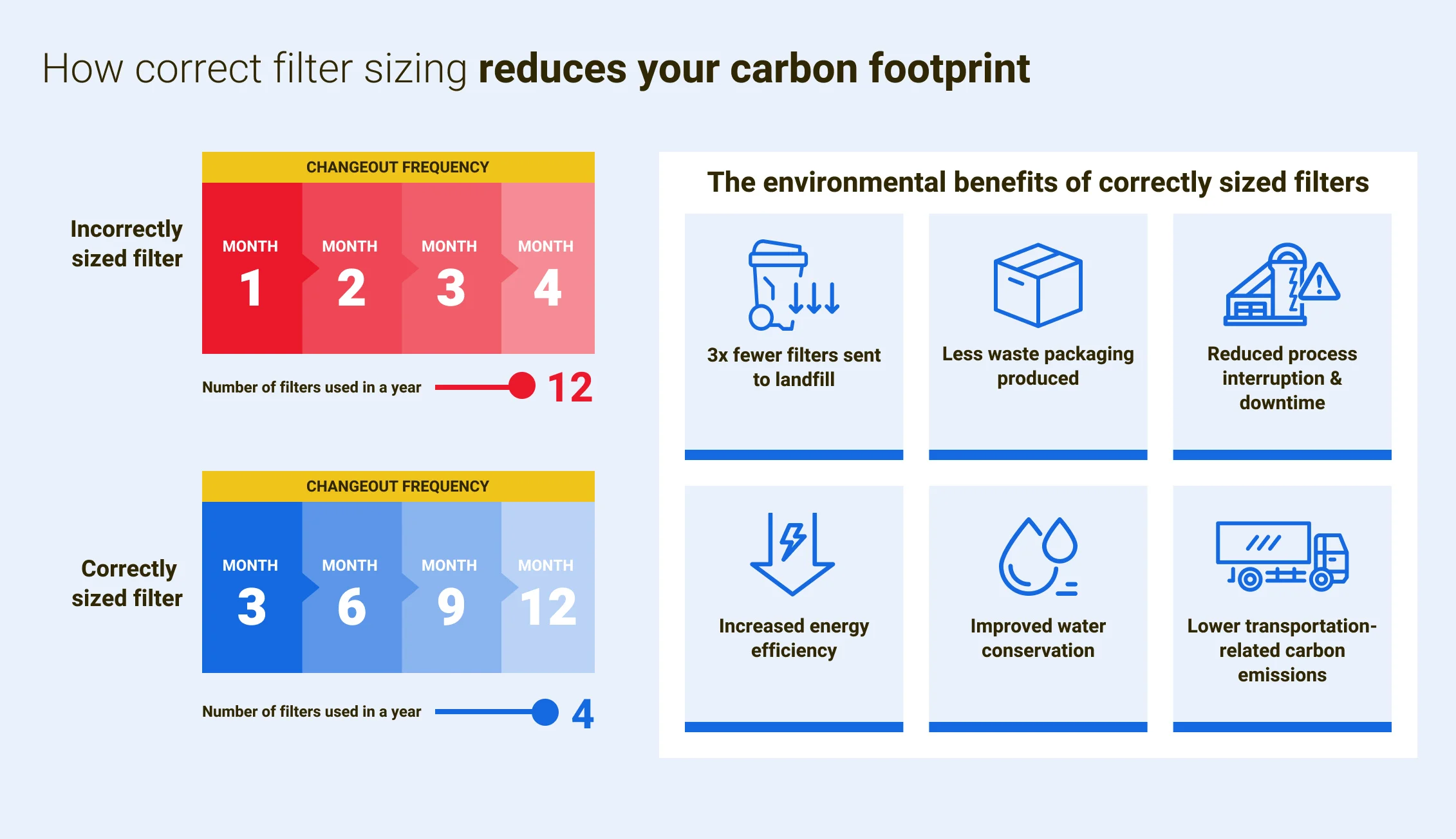
4. Specification
The filter you need depends on the product purity required and filtration stage. If you don’t choose the right one, you could end up going through filters faster, paying more than you need, or recalling products.
A nominal filter is a good option for general purposes and pre-filtration, as it will remove some, but not all, particulate. An absolute filter is more precise, so it’s essential for high purity requirements, like pharmaceutical and food production.
Getting a filter that meets your specific requirements gives you the best performance with the least waste.
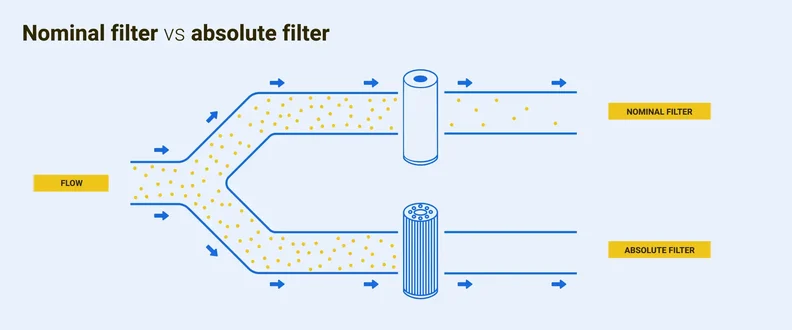
Other ways to reduce production waste
On top of extending your filter lifetime, you can reduce waste by:
- Converting waste to power via energy recovery plants or pyrolysis
- Obtaining accreditations such as ISO 14001:2015 for environmental management
- Using sustainable polypropylene filters
- Transitioning to sustainable packaging
- Using renewable energy to power production
- Applying lean manufacturing principles
Start reducing waste from your filtration processes
To fine-tune your filtration, regularly review and update your systems and processes so they’re fit for purpose. This will give you a better ROI, more efficient production, and crucially, less waste.
Auxiliary Machinery,High Capacity Vacuum Loading Machine,Central Centralized Feeding System,Mixing System
Jiangsu Kunwei Langsheng Equipment Technology Co., Ltd , https://www.kunweilanxess.com
![<?echo $_SERVER['SERVER_NAME'];?>](/template/twentyseventeen/skin/images/header.jpg)
